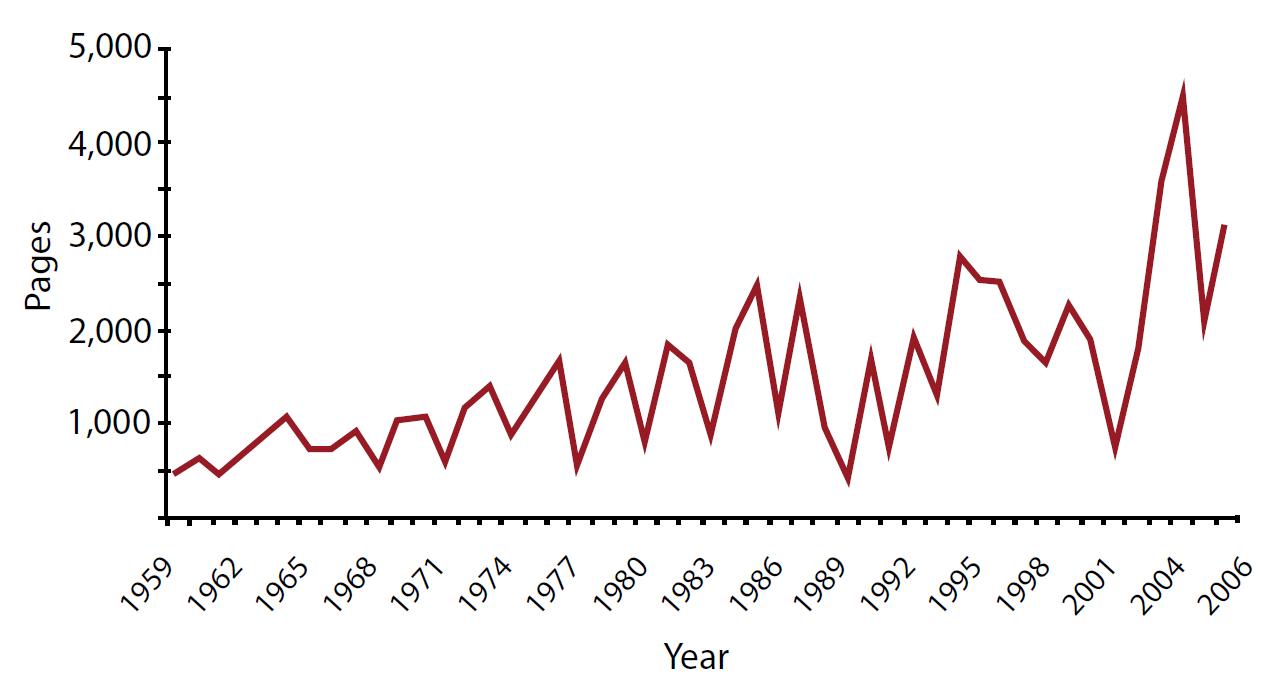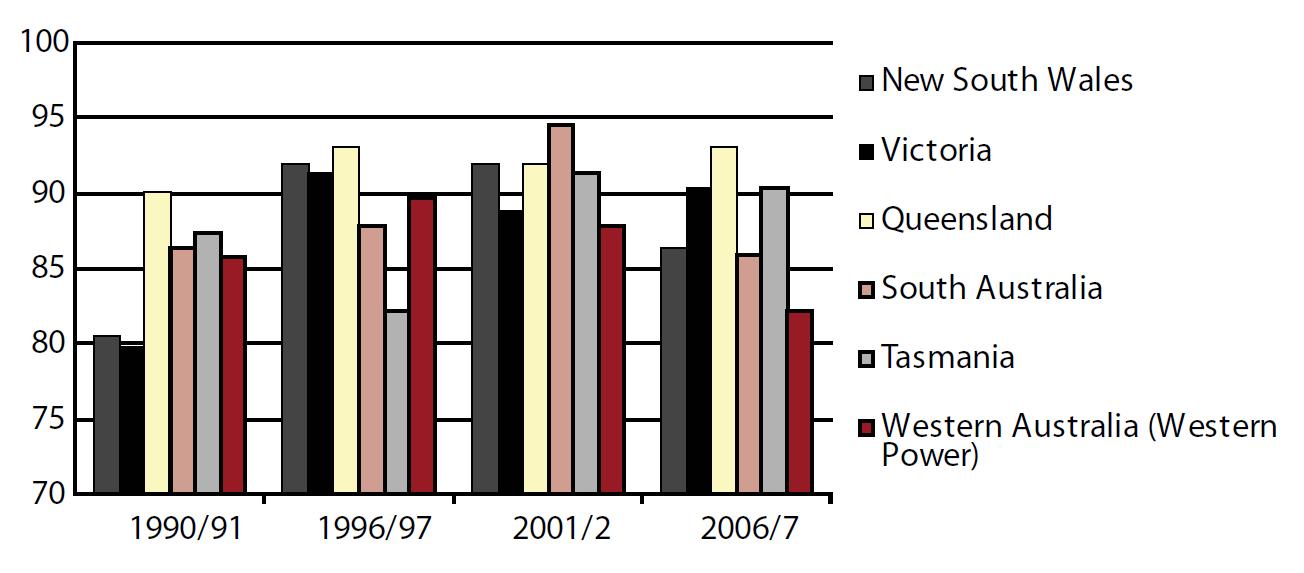Backgrounder
EXECUTIVE SUMMARY
The incentives to develop the technologies to reduce global CO2 emissions are being undermined. Internationally, a campaign is being run to undermine the intellectual property that incentivises research and development on CO2 mitigation technolo gies. These technologies are vital to assist developing and developed countries to reduce their CO2 emissions based on their commitments in international treaties.
The campaign is being run by developing countries and NGOs claiming patents are reducing the access to CO2 mitigation technologies beyond the means of developing countries.
These NGOs and developing countries are now advocating for amendments to the WTO's intellectual property rules (the TRIPS Agreement) to allow for compulsory licensing of CO2 mitigation technologies. Compulsory licensing allows for the property rights to be waived on patented inventions and the commercial return they provide. Without the commercial return there is no incentive for investors to fund research and development into new technology.
Importantly, the industry is very much in its infancy. The stage of development of the industry has been compared to the semicon ductor industry 35 years ago, or the biotechnology industry 25 years ago. Compulsory licensing will stop the industry reaching maturity.
The campaign to undermine incentives for new research and development is not without precedent. Advocates are using the successful campaign to compulsory license essential medicines under the TRIPS Agreement as precedent. They are also advocating for the issue to be debated and included in the next agreement out of the UNFCCC process scheduled to be completed in Copenhagen in 2009.
By promoting compulsory licensing NGOs and developing countries are claiming that technology will become more accessible. It won't.
Numerous studies have found that IP rights are vital for technology transfer from developed to developing countries. IP provides a tradeable right for an intangible good that assists patent holders to transfer their property without fear of losing control of their technology.
Instead, studies have found that the bigger threat to technology transfer is not strong IP regimes, but weak ones. Weak IP rules undermine both the incentives to innovate and discourages technology transfer from developed to developing countries because the owners risk a violation of their property rights.
Because of the importance of the private sector in developing the technologies to combat environmental challenges, previous international treaties have explicitly acknowledged their role. The Convention for the Protection of the Ozone Layer and the Kyoto Protocol both recognise the role of private property rights to address their respective objectives. Both agreements also recognise the private sector's role in promoting technological diffusion.
The importance of the private sector is also acknowledged by Governments and multilateral institutions. Both are currently working on programs to incentivise private investment into CO2 mitigation technologies. The ultimate consequence of undermining IP rights would be to undermine these programs, as well as commercial incentives.
Attacking patents as the main barrier to technology transfer is also a distraction from the real barriers that exist to technological diffusion in developing countries—tariffs and non-tariff barriers. In the top 15 greenhouse gas emitting developing nations, tariff barriers for CO2 mitigation technologies can be as high as 30 per cent. Non-tariff barriers can be as high as 160 per cent. Only one country welcomes the free trade of CO2 mitigation technologies.
In comparison to campaigning against patents, if developing countries are serious about reducing the cost of CO2 mitigation technologies, they can start by reducing the tariff and non-tariff barriers.
ACRONYMS
CO2 = Carbon dioxide
EGSA = Environmental Goods and Services Agreement
EU = European Union
FDI = Foreign direct investment
GATS = General Agreement on Trade in Services
GHG = Greenhouse gas
IP = Intellectual property
IPRs = Intellectual property rights
NGO = Non-government organisations
NTB = Non-tariff barrier
WIPO = World Intellectual Property Organisation
WTO = World Trade Organisation
UNFCCC United Nation Framework Convention on Climate Change
US = United States
USD$ = United States dollar
INTRODUCTION
Global efforts to reduce CO2 emissions are increasing. In the lead up to, and following the Bali UNFCCC Summit, there has been a strong push by developing and developed countries alike to utilise the benefits of CO2 mitigation technology to reduce emissions.
One of the core efforts made by governments has been to provide incentives for investors to fund research and development of technologies that would deliver environmental and market dividends.
Addressing CO2 emissions through technology has become important because governments in developing countries have made it clear that they aren't going to slavishly reduce emissions. Developing countries have baulked at proposals that would hinder their efforts to boost economic growth and reduce poverty.
Utilising technology is an important solution for developing countries to reduce emissions while maintaining economic growth. Technologies such as wind power, clean coal, photovoltaic solar panels and fluorescent lamps can all contribute to reducing emissions by:
- Replacing existing energy generation;
- Cleaning existing energy generation; or
- Increasing the energy efficiency of consumption.
Yet, most of the technologies are owned by private individuals, not governments. These inventions are protected by patents that allow the innovator to exploit their invention for commercial gain to offset the cost of its invention.
Recently, NGOs and governments in developing countries have started claiming that these patents are creating an unnecessary barrier to the transfer of CO2 mitigation technologies that would otherwise help developing countries reduce their emissions. Due to this claim, NGOs and developing countries have begun advocating for the removal of patents through the use of compulsory licenses.
Doing so could have a very significant effect on the transfer of these technologies from developed to developing countries. It is also likely to undermine long-term investment in the next round of technologies to reduce CO2 emissions further.
WHAT IS COMPULSORY LICENSING?
Compulsory licensing is intellectual property (IP) jargon for waiving the property rights that patents confer for an invention. When a compulsory license is issued, a non-patent holder is given the right to reproduce the invention without being in breach of the patent. Compulsory licensing is generally awarded with limited, or no, financial compensation to the patent holder.
Patents are awarded to balance the societal benefit from innovation with the incentives necessary to promote it. Patents provide investors incentives to direct investment capital toward research and development, with the expectation of a commercial return.
The incentive is provided through a property right that allows the patent holder to exclude others from commercialising their invention. There is no one fixed period of time for the life of a patent, but the standard is the minimum requirement under the World Trade Organisation's (WTO) Trade Related Aspects of Intellectual Property Rights (TRIPS) agreement of 20 years. The incentive patents confer varies depending on the industry. For technology requiring significant capital outlay before there is a return on the investment, they are essential. The cost of developing CO2 mitigation technology is significant, and rising. (1) As a result, governments and multilateral institutions are developing investment programs to incentivise private capital to invest in the research and development of CO2 mitigation technologies.
Many countries have compulsory licensing provisions; but these are designed to only be used in exceptional circumstances. IP is governed by both domestic law and international treaties. While there are a number of IP treaties that exist, they are enforced on most countries through the TRIPS agreement and the WTO's dispute settlement process.
The TRIPS agreement binds WTO members to many international IP treaties and their obligations, as well as establishing a number of additional obligations. The TRIPS Agreement also provides for compulsory licensing. Section 31(b) of the TRIPS agreement allows for compulsory licensing of patented technologies in cases of "national emergency or other circumstances of extreme urgency or in cases of public non-commercial use". (2)
Section 31 (b) has been tested on a number of occasions throughout the debate surrounding TRIPS and public health. Since its foundation in 1994, the TRIPS agreement has been the source of significant international debate about the obligations it places on WTO members and whether they conflict with public health priorities.
Many developing countries and non-government organisations (NGOs) have argued that the exclusive rights that patents provide to inventors undermines technological diffusion. In the case of public health, they have argued that patents increases the price of essential medicines. The inclusion of Section 31 (b) in the TRIPS agreement was designed to address these concerns. In response, many developing countries have issued compulsory licenses on medicines under the provisions allowed for in Section 31(b).
Since then, a series of declarations, as part of the Doha Development Agenda, have amended the IP protection required by TRIPS. In the 2001 Declaration on the TRIPS agreement and Public Health countries were given the "right to determine what constitutes a national emergency or other circumstances of extreme urgency". (3) Similarly, amendments have been made to allow for the parallel importation of patented medicines when a country does not have the industrial capacity to issue compulsory licenses to a domestic producer.
Numerous governments, notably Thailand and Brazil, have issued compulsory licenses for HIV/AIDS and heart medicines. While HIV/AIDS medicines are considered legitimate targets for compulsory licenses, the compulsory licensing of heart medications is deemed to be an abuse of the obligation to only issue compulsory licenses in cases of "national emergency or other circumstances of extreme urgency".
COMPULSORY LICENSING AND CO2 MITIGATION TECHNOLOGY
Opponents of IP rights have used compulsory licensing of medicines as a vehicle to undermine IP regimes. They have used their attack on pharamaceutical patents to push back against the obligations WTO members signed up to under the TRIPS Agreement. They are now using CO2 mitigation technology as their next battleground to broaden the definition of the applicability of compulsory licenses. To do so, they are advocating for amendments to the TRIPS Agreement and for compulsory licensing to be included in the next agreement from the United Nations Framework Convention on Climate Change (UNFCCC) and further amendments to the TRIPS Agreement for CO2 mitigation technology.
Their argument for the inclusion of compulsory licensing in the UNFCCC process is essentially the same as those used for medicines. According to them patents awarded to CO2 mitigation technologies increase the price of technologies beyond the means of developing countries. By increasing the price, technological diffusion of essential technologies is being inhibited. As a result, developing countries are unable to access the technologies that would otherwise reduce their emissions in order to avert human-caused climate change.
Advocates are using the debate surrounding TRIPS and public health as a precedent. At a speech to a meeting of the Environment Ministers in the Framework of G-8 + 5 Presidency, the Indian Minister of Environment and Forest, Shri A. Raja, argued that "an agreement is needed on intellectual property rights on technological efforts in developing countries paralleling the successful agreement on compulsory licensing of pharmaceuticals". (4)
Similar sentiments were voiced by the Indian Prime Minister, as well as other developing countries in the lead up to the 2007 G-8 Summit. The governments of Brazil, China, India, Mexico and South Africa released a Joint Position Paper which included a request from the countries to the G8 Summit to consider "an agreement on transfer of technologies at affordable costs for accelerated mitigation efforts". (5)
In press reports leading up to the Summit, there were also calls for "an agreement on ... IPRS on technological efforts in developing countries paralleling the successful agreement on compulsory licensing of pharmaceuticals". (6)
However, developing countries are not alone. In late November last year, the European Parliament passed a French Green MP's motion relating to efforts on trade and climate change. The motion called for a "study on possible amendments to the WTO Agreement on Trade Related Aspects of Intellectual Property Rights in order to allow for the compulsory licensing of environmentally necessary technologies". (7) While the motion also called for any amendments to be "within the framework of clear and stringent rules for the protection of intellectual property", the intention of the motion is clear.
International NGO, Friends of the Earth, has also called for the removal of IP on CO2 mitigation technologies. While not calling specifically for compulsory licensing, Friends of the Earth has advocated "amend(ing) TRIPs ... so that developing countries can exclude from patentability green technologies". (8) The effect would be similar.
The UNFCCC Bali Summit in December 2007 became the launching pad for developing countries to campaign for compulsory licensing in the UNFCCC process. In a high-level official side-event on the second-last day of the conference, the Nigerian Environment Minister, Halima Tayo Alao, spoke out against IP as a "barrier" for developing countries to access carbon dioxide mitigation technologies.
It appears the campaign against IP on CO2 mitigation technology is gaining traction. During the UNFCCC Summit there was an informal meeting of Trade Ministers discussing the relationship between climate change and trade policy. At a side-event on the Monday following the informal meeting Indonesian Trade Minister, Mari Pangestu, commented that Trade Ministers discussed using TRIPS flexibilities on CO2 mitigation technology. The most relevant TRIPS flexibility mechanism for accessing CO2 mitigation technology is compulsory licensing.
The UN is also undermining incentives to develop new mitigation technologies. At another side-event the UN Department of Economic and Social Affairs released a paper arguing for "tiered pricing". (9) Tiered pricing is currently used by pharmaceutical companies to introduce different prices in different markets, dependent on the capacity of consumers to pay. For tiered pricing to work successfully limitations must be placed on the import of patented products to ensure that parallel importation of cheaper products into wealthier countries does not occur. Doing so undermines the pricing structure of the patent holder and removes incentives to provide cheaper products to poorer consumers.
Undermining IP on CO2 mitigation technologies would cause irreparable damage to the development of technologies necessary to reduce emissions. The green technology industry has been compared in terms of its infancy to the semiconductor industry 35 years ago or the biotechnology industry 25 years ago. (10) Research and development into CO2 mitigation technology requires significant, long-term, up front financial commitments. Such commitments will only come with a guarantee of property rights on the end product and a commercial market for its output.
IP HELPS TECHNOLOGY TRANSFER
On the surface, introducing compulsory licensing for CO2 mitigation technologies would appear to aid technological diffusion and assist developing countries in meeting their emissions reduction targets. But IP is not a barrier to technological diffusion, it assists it.
Developing countries are increasingly relying on IP protected goods and services to develop their economies, improve living standards and maintain or improve their environmental standards. IP provides a tradeable property right to transfer technology. Licensing of patented products is particularly important for technology transfer in developing countries that have weak IP regimes, where companies are reticent to use foreign direct investment (FDI) because of the risks associated with enforcement. (11) Studies have shown the clear relationship between weak enforcement and reduced FDI from firms with IP-dependent goods and services. (12)
Similarly, weak IP regimes also discourage joint ventures between businesses in developed countries who own patented technologies and businesses in developing countries. The Stern Review on the economics of climate change found that "joint ventures (are) likely to lead to effective technology transfer ... (and) are an effective long-term route to embed local firms into the learning network of transnational corporations". (13) A study by the International Energy Agency came to a similar conclusion, citing that one of the main barriers to technology transfer was a lack of IP rights protection. (14)
The Stern Review also found that "companies with advanced technologies often cite insufficient IP protection in developing countries as a barrier to technology transfer". (15) Instead, companies believe "stronger protection ... would help them deploy advanced technologies". (16)
Strong IP regimes are important for commercial licensing that promotes technology transfer. Licensing is a widely used method for diffusing patent protected inventions to ensure that they access as wide a market as possible.
Licensing is also important because many contemporary inventions are now built on the use of other protected material. For example, computers are based on a combination of IP-protected technology. Computers are built with multiple IP-protected technologies owned by different parties. These technologies are licensed by their owners to manufacturers. These manufacturers then provide royalties of the final product's sale to the licensee in recognition of the use of their technology. (17)
Compulsory licensing will not supplant the need for IP as a facilitator of technology transfer. Instead it will undermine transfer. A recent World Bank Human Development Report Working Paper came to similar conclusions about the alleged cost of patents. The working paper argued "much of the knowledge required to develop, produce and deploy cleaner coal technologies is tacit and is not codified in patents". (18)
But the recent debate on CO2 mitigation technologies is not the first time that undermining patents has been considered and rejected in environmental treaties. During the debate on the formulation of the Ozone Layer Convention there was consideration of, and understanding that, weak IP regimes undermined technology transfer by giving IP right holders justification to deny access to their technologies. (19)
Advocates for reducing CO2 emissions often point to the 1985 Vienna Convention for the Protection of the Ozone Layer as a demonstration of how the global community can work effectively to respond to increases in carbon dioxide emissions. However, the 1985 Agreement is also instructive on colpulsory licensing.
The Ozone Layer Convention clearly identifies that there should be collaboration to address the challenge posed by a diminished ozone layer, including scientific and technical cooperation. Futhermore compulsory licensing is not accommodated in the text. Instead the Convention explicitly states that cooperation "has to be consistent with national laws, regulations and practices regarding patents, trade secrets, and protection of confidential and proprietary information." (20)
The Ozone Layer Convention is not the only international agreement to provide cold comfort to advocates of compulsory licensing. The 1997 Kyoto Protocol also recommends efforts for technological diffusion of environmentally sound technologies through "an enabling environment for the private sector, to promote and enhance the transfer of, and access to, environmentally sound technologies". (21) In essence, the Kyoto Protocol promotes protection of private property and recognises the important role that the private sector plays in innovating and transferring technologies to reduce CO2 emissions.
UNDERMINING IP WOULD UNDERMINE INNOVATION
Despite the erroneous claims that undermining patents would foster technological diffusion, doing so would have a very real and concerning impact on the development of new CO2 mitigation technologies.
IP is vital to ensure there is sufficient incentive for investors and innovators to provide the capital outlay for sophisticated technology. CO2 mitigation technologies will only be developed so long as there is a commercial market for their use.
Governments and multilateral agencies are currently developing investment frameworks to incentivise private sector investment in CO2 mitigation technologies. But to do so requires strong IP regimes. This was the conclusion of the Stern Review. The Stern Review identified that "there are a number of measures that governments can take to create a suitable investment climate for energy investment and the adoption of new technologies, such as ... strengthening intellectual property rights". (22)
Instead NGOs and developing countries are advocating for the reverse and in doing so will undermine investment. A UNDP study has found that compulsory licensing of CO2 mitigation technology would send a worrying signal to investors and innovators in a relatively new area of technology innovation. The study argued that the stage of development of technological development matters and that undermining commercial incentives "may have implications in terms of the level of private investment already made in a technology and the level of returns that IPR owners need to derive before they are happy to release the IPR." (23)
The report also argues that "regulations governing ... (IPRs) could also help in some cases to build confidence amongst international firms and encourage them to engage in practices such as licensing and joint ventures." (24)
The irony is that governments and multilateral institutions are currently investing significant resources into developing frameworks to incentivise private capital investment in CO2 mitigation technologies. Yet NGOs and developing countries are actively working to undermine the incentives for the development of these frameworks by advocating for the removal of patent enforcement. Removal of patents will undermine the creation of new technologies and halt their diffusion.
COMPULSORY LICENSING IS A DISTRACTION
Advocating compulsory licensing is a distraction from the real barriers that prevent developing countries from accessing CO2 mitigation technologies. The real impediment to accessing environmental technologies is not IP, but tariff barriers and non-tariff barriers (NTBs). (25)
The global market for environmental goods and services is worth between USD$550 billion and USD$613 billion per annum. Of this figure, 35 per cent is in goods and 65per cent in services. Yet some countries impose tariffs of up to 70 per cent on these technologies. (26) In Asia and Latin America the average tariff on environmentally sensitive technologies is between 15 and 20 per cent. (27) If the governments of developing countries want to promote the transfer of CO2 mitigation technologies, they can do something immediately—remove their tariff barriers.
A study by the World Bank supports this conclusion. In 2007 the World Bank released its report International Trade and Climate Change, which investigated the role of tariff barriers on "green" technologies. The study found that the diffusion of technologies would increase by between 7 and 14 per cent per year based on different models of liberalisation. (28)
Table 1 identifies the enormity of the barriers imposed by the top 15 greenhouse gas (GHG) emitting developing countries. Tariff rates are high on some technologies, including as much as 30 per cent on solar photovoltaic cell technology and fluorescent lamps by Zambia. But even higher NTBs exist for many countries.
Table 1: Applied average tariff and NTBs for climate friendly
technologies in the 18 high-GHG-emitting developing countries
| Country | Clean Coal | Wind | Solar | Fluorescent
Lamps |
|---|
| Tariff | NTB | Tarff | NTB | Tariff | NTB | Tariff | NTB |
| China | 15 | 25 | 8 | 0 | 10 | 0 | 8 | 0 |
| Colombia | 15 | 0 | 10 | 32 | 15 | 0 | 20 | 0 |
| India | 15 | 0 | 15 | 0 | 15 | 0 | 15 | 102 |
| Venezuela | 15 | 0 | 10 | 0 | 15 | 0 | 20 | 0 |
| Brazil | 14 | 145 | 14 | 87 | 18 | 53 | 18 | 96 |
| Mexico | 12 | 0 | 15 | 0 | 13 | 62 | 15 | 0 |
| Bangladesh | 6 | 0 | 8 | 0 | 25 | 0 | 19 | 0 |
| Chile | 6 | 0 | 6 | 0 | 6 | 0 | 6 | 0 |
| Zambia | 5 | 0 | 15 | 60 | 30 | 0 | 30 | 83 |
| Egypt | 5 | 149 | 6 | 70 | 32 | 0 | 18 | 87 |
| Nigeria | 5 | 160 | 0 | 89 | 20 | 70 | 20 | 91 |
| Philippines | 3 | 119 | 6 | 88 | 15 | 70 | 11 | 93 |
| Thailand | 1 | 0 | 10 | 0 | 10 | 0 | 20 | 0 |
| Argentina | 0 | 0 | 14 | 0 | 18 | 57 | 18 | 0 |
| Indonesia | 0 | 0 | 10 | 0 | 15 | 0 | 5 | 0 |
| Kazakhstan | 0 | 0 | 0 | 0 | 0 | 0 | 0 | 0 |
| Malaysia | 0 | 93 | 5 | 59 | 18 | 0 | 30 | 85 |
| South Africa | 0 | 125 | 0 | 0 | 12 | 0 | 17 | 0 |
| High Income OECD countries | 1 | 0 | 3 | 0 | 3 | 0 | 4 | 0 |
Source: WITS Database, Adapted from World Bank, "International Trade and Climate Change: Economic, Legal and Institutional Perspectives", 2007
For example, the Philippines, Nigeria and Egypt all have NTBs of over 110 per cent on clean coal technology. In the case of Nigeria it is 160 per cent. Similarly, India has NTBs of over 100 per cent on fluorescent lamps. The only country of the top 15 GHG emitting nations that can claim any piety is Kazakhstan, with 0 per cent tariffs and NTBs on those CO2 mitigation technologies that were surveyed.
The World Bank report also found that weak IP regimes were another form of NTB undermining the transfer of climate friendly technologies. (29) Similar conclusions were developed by Professor Barton of Stanford Law School, who recently argued that there were not "significant" barriers to technology transfer caused by IP, but there were by tariffs and similar barriers. (30) Further, Barton identified weak IP barriers as one of the potential barriers to technology transfer that provide disincentives for foreign investors. (31)
Despite its enthusiasm for compulsory licensing, even the European Parliament recognises the damaging effect that tariffs on environmental technologies is having. In its motion calling for compulsory licensing it also calls for "the need to reduce barriers to 'green' trade by, for example, removing tariffs on 'green' goods at the WTO level". (32)
The point has not been lost on the US either. Removal of "green" tariffs was the objective outlined in the lead up to the Bali Summit in a joint proposal put forward by the US and the EU. The proposal to introduce an Environmental Goods and Services Agreement (EGSA) is designed to reduce the tariff barriers and NTBs that exist, mostly in the developing world, on goods and services that will assist in reducing CO2 mitigation emissions. (33)
Under the US/EU proposal there would be a two-tiered effort to remove barriers on green technologies. The first would be to remove tariff barriers on goods, and for countries to amend their General Agreement on Trade in Services (GATS) schedules to facilitate providers of "green" services. The second tier would be the negotiation of an EGSA to remove all NTBs on goods and bind existing market access and national treatment commitments for services. (34)
Yet despite the cost of tariffs and NTBs to accessing CO2 mitigation technologies, the NGO, Friends of the Earth advocate for their maintenance. In a recent statement, they attacked an earlier EU push to remove tariffs and NTBs arguing they were necessary to "enable developing countries to build their own supply capacity in developing environmental products". (35)
The US/EU proposal for the negotiation of an EGSA is consistent with the Doha Development Agenda in the WTO. Paragraph 31 (iii) of the 2001 WTO Doha Ministerial Declaration called for "the reduction or, as appropriate, elimination of tariff and non-tariff barriers to environmental goods and services".
Attacks on intellectual property are simply a distraction from the root barriers to the trade in CO2 mitigation technologies. Compulsory licensing will achieve little to promote technological diffusion. In comparison, the removal of tariffs and NTBs will add significantly to the free trade of CO2 mitigation technologies, thus helping developing countries reduce their emissions.
CONCLUSION
Technology is a vital component in the matrix of solutions to reduce global CO2 emissions. But it is important that, in the process of diffusing the technology to mitigate emissions, policy makers do not lose perspective. It would be counter-productive to remove the incentives that will foster the development of those new technologies that will replace existing technologies as humanity discovers newer, more efficient ways of mitigating CO2.
Advocates for compulsory licensing are arguing that it is necessary to promote technological diffusion for developing countries, who have limited resources to buy CO2 mitigation technologies.
Simplistically removing patents may appear to support the diffusion of CO2 mitigation technologies, but it will actually undermine it. Removing patents will discourage investment and undermine the tradable nature of property rights that patents confer. Undermining licensing of these technologies will discourage FDI into developing countries to transfer technologies.
The industry for environmental technologies is very much in its infancy. It has been compared to the stage that the semiconductor industry was at 35 years ago, or the biotechnology industry 25 years ago. The long term consequence of undermining patents will be to undermine innovation in the next generation of CO2 mitigation technologies.
The cost of undermining patents is well understood. Hence previous international environmental treaties, including the Convention for the Protection of the Ozone Layer and the Kyoto Protocol, recognise the contribution that property rights play in transferring CO2 mitigation technologies to the countries that need them.
Attempting to undermine patents is also a distraction from the barriers that developing countries can remove immediately. Tariffs and NTBs aggressively undermine the accessibility of CO2 mitigation technologies by dramatically increasing their price. In some cases removal of NTBs would result in more than a 50 per cent cut in the price of mitigation technologies. Removing these barriers will do far more to increase the accessibility of CO2 mitigation technology than removing patents ever will.
REFERENCES
1. Wald, M., "Mounting costs slow the push for clean coal", New York Times, 30/05/2008
2. World Trade Organisation, "Trade Related Aspects of Intellectual Property Rights Agreement", 1994
3. World Trade Organisation, "Declaration on the TRIPs Agreement and Public Health", 14/11/2001
4. ___., "India's level of energy efficiency in the major energy intensive sector growth are at global levels", 17/03/2007, cited on 11/04/2008
5. ___., "Joint Position Paper of Brazil, China, India, Mexico and South Africa participating in the G-8 Summit", 08/06/2007, cited on 26/02/2008
6. Madhavan, N., "China and India set to make common cause on global warming", Hindustan Times, 06/06/2007, cited on 22/02/2008
7. European Parliament, "Trade and Climate Change", 29/11/2007
8. Raman, M., "Climate and Trade", Friends of the Earth International and Malaysia, 27/06/2007, p2
9. Wilson, T., "Low Emissions technology under UN threat", Review, 03/2008, p7
10. Israel, C., "Don't kill the green goose: The Importance of Stimulating and Rewarding Clean Energy Breakthroughs", IPI Ideas, n48, 05/2008, p1
11. Maskus, K., "The role of intellectual property rights in encouraging foreign direct investment and technology transfer", Paper prepared for the conference "Public-private initiatives after TRIPS: Designing a Global Agenda", Brussels, Belgium, 16-19/07/1997
12. Maskus, K., Doughtery, S. & Mertha, A., "Intellectual property rights and economic development in China" in Fink, C. & Maskus, K., "Intellectual Property and Development: Lessons from Economic Research", World Bank, 2005, pp325-327, cited on 01/02/2008
13. Stern, N., "Stern Review on the Economics of Climate Change", Part VI, 2006, p7
14. International Energy Agency, "Technology without borders: Case studies of successful technology transfer", United Nations Environment Program & the Climate Technology Initiative, 1998, p13
15. Stern, 2006, p10
16. Stern, 2006, p10
17. Gans, J., Williams, P. & Briggs, D., "Intellectual Property Rights: a grant monopoly or an aid to competition?", Intellectual Property Research Institute of Australia Working Paper, n07/02, 05/12/2002, p11
18. Watson, J., MacKerron, G., Ockwell, D. & Wang, T., "Technology and carbon mitigation in developing countries: Are cleaner coal technologies a viable option?", Human Development Report 2007/2008, Human Development Report Office Occassional Paper, United Nations Development Program, 2007/16, p52
19. Kahn, A. H., "International Legal Framework for Protection of Intellectual Property under the TRIPS Agreement/The WTO & Related Human Rights Issues of Dissemination & Transfer of Environmentally Sound Technology -- A critique of conflicting rights", Lund University, Autumn 2002, p72
20. United Nations Environment Program, "The Vienna Convention for the Protection for the Ozone Layer", Kenya, 1985
21. United Nations Framework Convention on Climate Change, "Kyoto Protocol to the United Nations Framework Convention on Climate Change", Article 10(c) 2007
22. Stern, N., "Stern Review on the Economics of Climate Change", Part IV, 2006, p6
23. Watson et al, 2007, p8
24. Watson et al, 2007, p51
25. World Bank, "International Trade and Climate Change: Economic, Legal and Institutional Perspectives", 2007, p13
26. European Commission, "EU and US propose new WTO green trade agreement for Doha Round", 30/11/2007 cited on 02/06/2008
27. Office of Environmental Technologies Industries, "Global Environmental Technologies: Trends, markets and perspectives", Export America, 11/2002, p25
28. World Bank, 2007, p53
29. World Bank, 2007, p59
30. Barton, J., "Patenting and access to clean energy technologies in developing countries", WIPO Magazine, 02/2008, cited on 27/02/2008
31. Barton, 2008
32. European Parliament, 2007
33. The United States Mission to the European Union, "US., EU announce new climate change initiatives for WTO", 30/11/2007 cited on 02/06/2008 and European Commission, "EU and US propose new WTO green trade agreement for Doha Round", 30/11/2007 cited on 02/06/2008
34. ___., "Summary of U.S. and EC Proposal for Liberalizing Trade in Environmental Goods and Services in the WTO DDA Negotiations", 31/11/2007
35. Raman, 2007, p2
BIBLIOGRAPHY
___., "India's level of energy efficiency in the major energy intensive sector growth are at global levels", 17/03/2007, cited on 11/04/2008
___., "Joint Position Paper of Brazil, China, India, Mexico and South Africa participating in the G-8 Summit", 08/06/2007, cited on 26/02/2008
___., "Summary of U.S. and EC Proposal for Liberalising Trade in Environmental Goods and Services in the WTO DDA Negotiations", 31/11/2007
Barton, J., "Patenting and access to clean energy technologies in developing countries", WIPO Magazine, 02/2008, cited on 27/02/2008
European Commission, "EU and US propose new WTO green trade agreement for Doha Round", 30/11/2007 cited on 02/06/2008
European Parliament, "Trade and Climate Change", 29/11/2007
Gans, J., Williams, P. & Briggs, D., "Intellectual Property Rights: a grant monopoly or an aid to competition?", Intellectual Property Research Institute of Australia Working Paper, n07/02, 05/12/2002
International Energy Agency, "Technology without borders: Case studies of successful technology transfer", United Nations Environment Program & the Climate Technology Initiative, 1998
Israel, C., "Don't kill the green goose: The Importance of Stimulating and Rewarding Clean Energy Breakthroughs", IPI Ideas, n48, 05/2008
Kahn, A. H., "International Legal Framework for Protection of Intellectual Property under the TRIPS Agreement/The WTO & Related Human Rights Issues of Dissemination & Transfer of Environmentally Sound Technology -- A critique of conflicting rights", Lund University, Autumn 2002
Madhavan, N., "China and India set to make common cause on global warming", Hindustan Times, 06/06/2007, cited on 22/02/2008
Maskus, K., "The role of intellectual property rights in encouraging foreign direct investment and technology transfer", Paper prepared for the Conference "Public-private initiatives after TRIPS: Designing a Global Agenda", Brussels, Belgium, 16-19/07/1997
Maskus, K., Doughtery, S. & Mertha, A., "Intellectual property rights and economic development in China" in Fink, C. & Maskus, K., "Intellectual Property and Development: Lessons from Economic Research", World Bank, 2005, pp325-327, cited on 01/02/2008
Office of Environmental Technologies Industries, "Global Environmental Technologies: Trends, markets and perspectives", Export America, 11/2002
Raman, M., "Climate and Trade", Friends of the Earth International and Malaysia, 27/06/2007
Stern, N., "Stern Review on the Economics of Climate Change", Part VI, 2006
United Nations Environment Program, "The Vienna Convention for the Protection for the Ozone Layer", Kenya, 1985
United Nations Framework Convention on Climate Change, "Kyoto Protocol to the United Nations Framework Convention on Climate Change", Article 10(c) 2007
The United States Mission to the European Union, "US., EU announce new climate change initiatives for WTO", 30/11/2007 cited on 02/06/2008
Wald, M., "Mounting costs slow the push for clean coal", New York Times, 30/05/2008
Watson, J., MacKerron, G., Ockwell, D. & Wang, T., "Technology and carbon mitigation in developing countries: Are cleaner coal technologies a viable option?", Human Development Report 2007/2008, Human Development Report Office Occassional Paper, United Nations Development Program, 2007/16
Wilson, T., "Low Emissions technology under UN threat", Review, 03/2008
World Bank, "International Trade and Climate Change: Economic, Legal and Institutional Perspectives", 2007
World Trade Organisation, "Trade Related Aspects of Intellectual Property Rights Agreement, 1994
World Trade Organisation, "Declaration on the TRIPs Agreement and Public Health", 14/11/2001

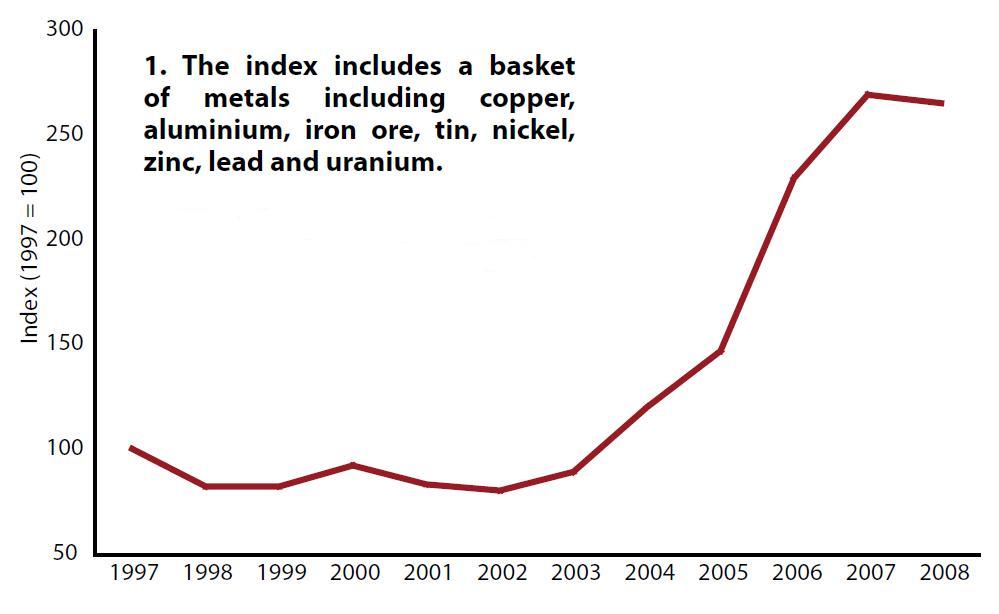 Source: IMF World Economic Outlook Database, April 2008.
Source: IMF World Economic Outlook Database, April 2008.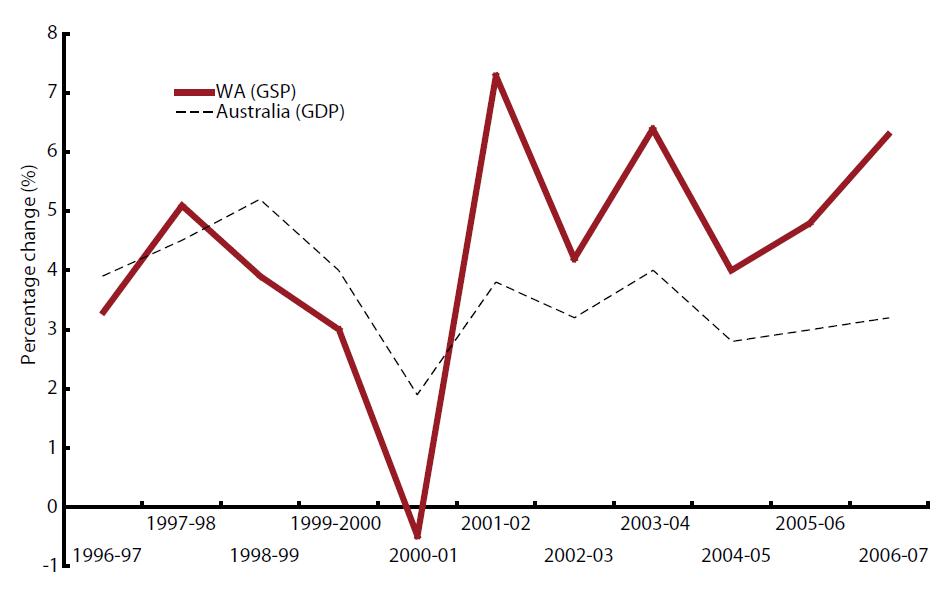 Source: ABS, Australian National Accounts: State Accounts, Cat. no. 5220.0.
Source: ABS, Australian National Accounts: State Accounts, Cat. no. 5220.0.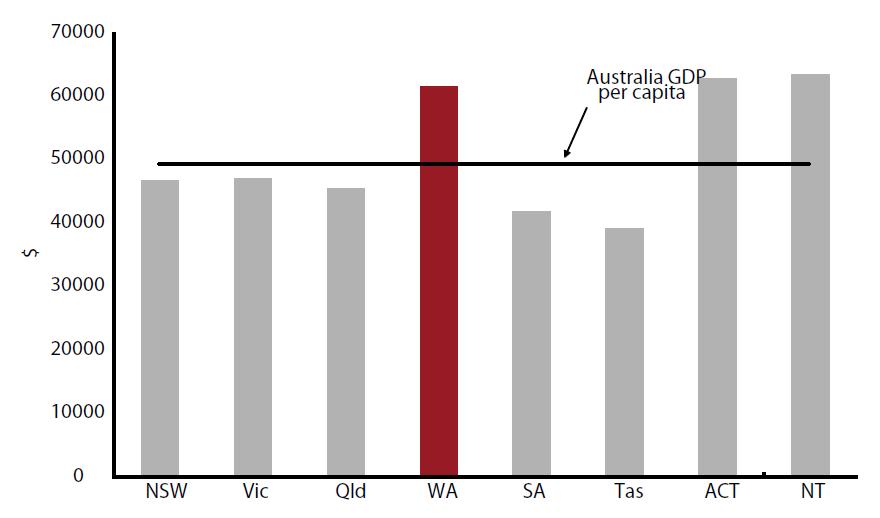 Source: ABS, Australian National Accounts: State Accounts, Cat. no. 5220.0.
Source: ABS, Australian National Accounts: State Accounts, Cat. no. 5220.0.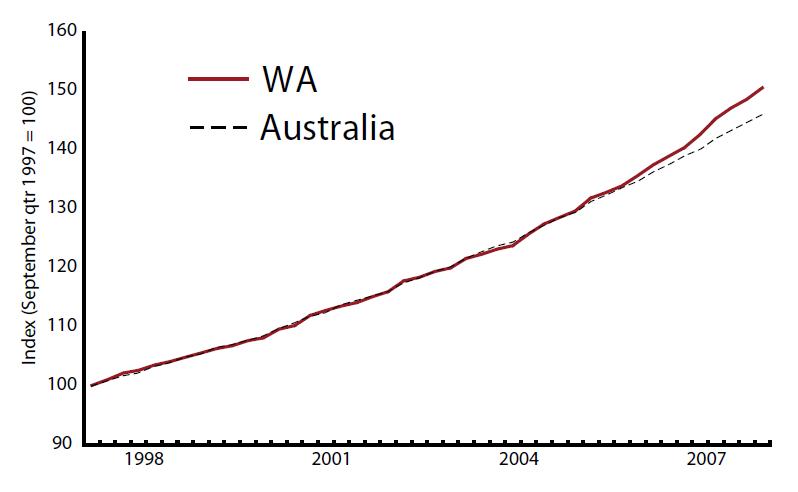 Source: ABS Labour Price Index, Australia, Cat. no. 6345.0.
Source: ABS Labour Price Index, Australia, Cat. no. 6345.0.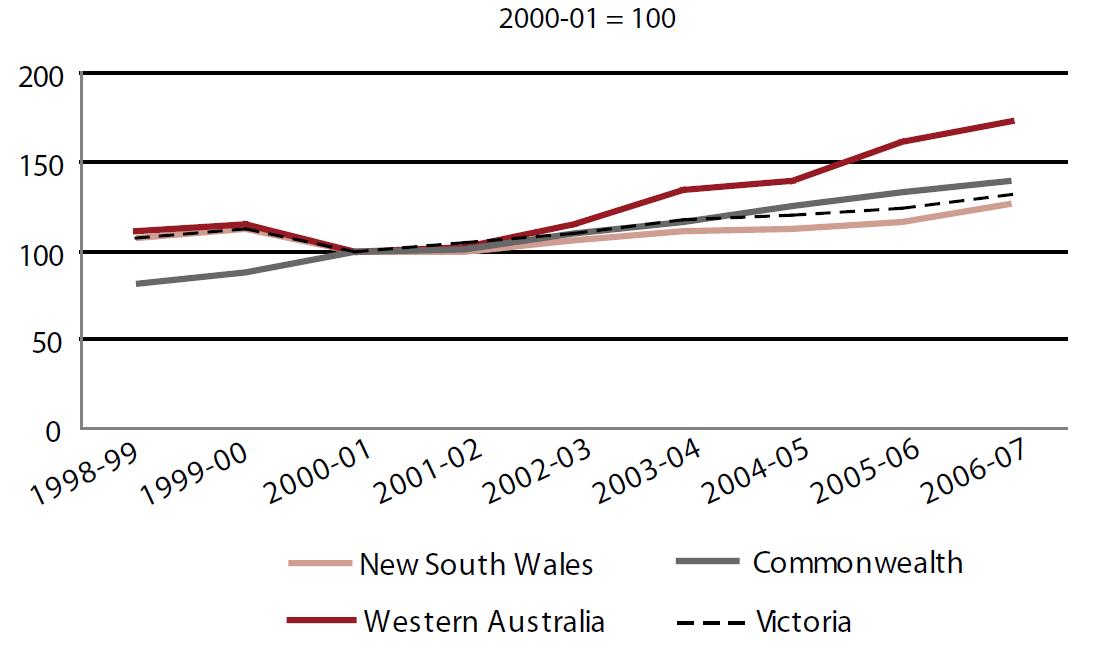
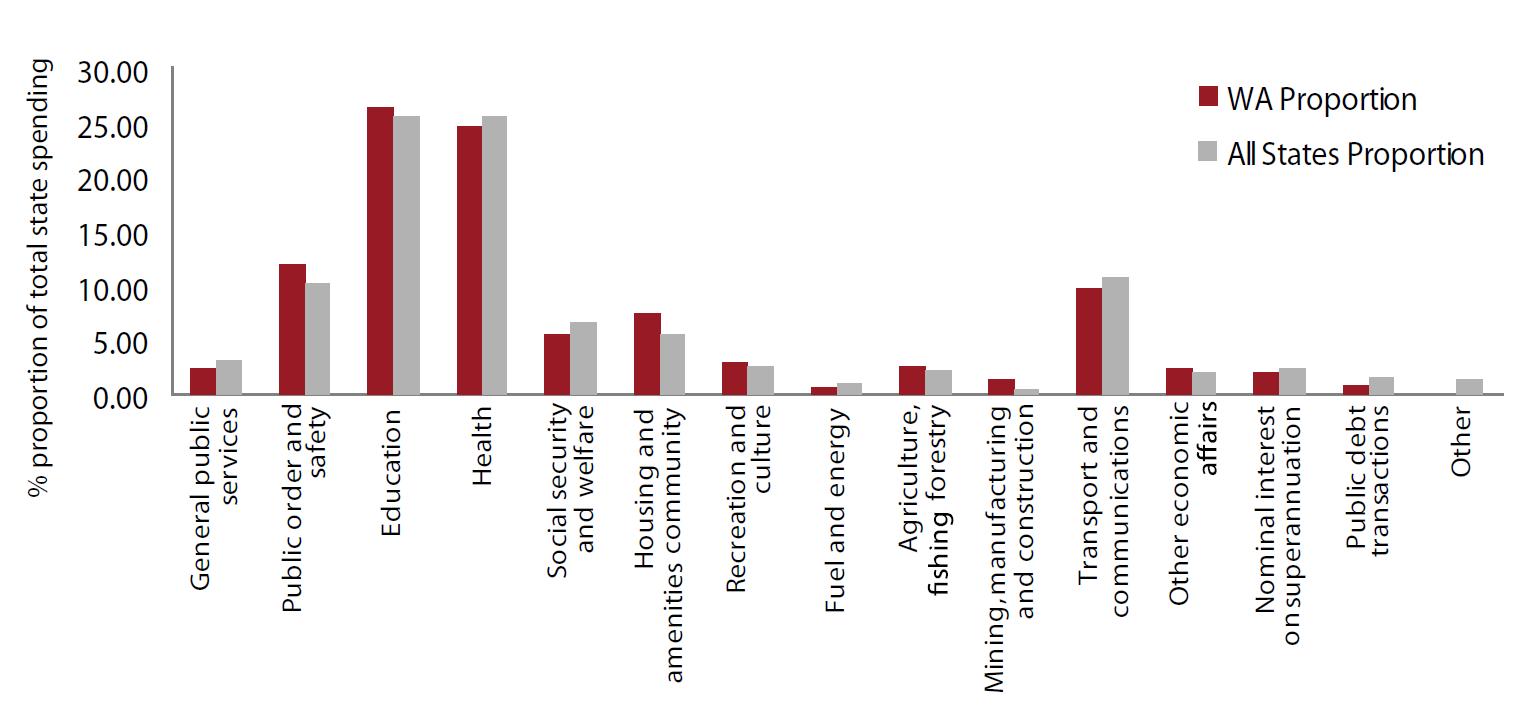 Source: ABS Statistics. Cat. 5512.0 (2006-07 data)
Source: ABS Statistics. Cat. 5512.0 (2006-07 data) Source: ABS Statistics. Cat. 5512.0
Source: ABS Statistics. Cat. 5512.0